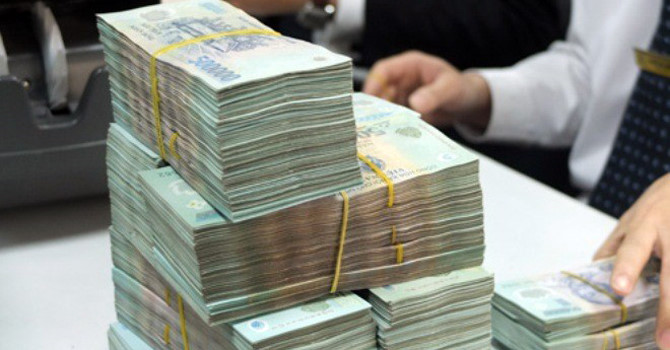Bank Loan Interest Rates High, Though Capital Still Flows To Real Estate


Director of the Credit Department Nguyen Quoc Hung confirmed last week that credit has grown by 5 percent and that loans disbursed for the agriculture sector have increased rapidly.
The outstanding loans to agriculture have reached VND1,300 trillion, an increase of 5.8 percent, or 21 percent of total outstanding loans, while loans to industrial production rose by 3.75 percent only.
Hung said the common characteristic of credit in the last few years is the gradual steady increase in all months. The targeted 17 percent credit growth rate in 2018 is within reach.
The State Bank affirmed that credit has supported economic growth as it concentrates on priority fields. Can Van Luc, chief economist of BIDV, said though the credit growth rate is not too high, the capital has been used more effectively.
In 2017, the growth rate of real estate credit was reported at 8 percent, less than half of the general credit growth rate. However, analysts said the capital flowing to the sector was huge. |
He said that the central bank should focus on improving credit quality, and not just try to obtain a credit growth rate target. The government needs to take measures to develop the capital market to gradually ease reliance on bank loans.
Currently, the ratio of credit to GDP in Vietnam of 130% is relatively high compared with the world and the region. That is why IMF has recommended that Vietnam be more cautious when increasing credit.
The credit growth for many years in the context of the modest increase in banks’ stockholder equity has led to a reduction in CAR (capital adequacy ratio).
In general, capital has been driven to priority business fields of the national economy.
Meanwhile, banks have been warned of the risks when disbursing money for business fields with latent risks.
In 2017, the growth rate of real estate credit was reported at 8 percent, less than half of the general credit growth rate. However, analysts said the capital flowing to the sector was huge.
Huynh Buu Son, a banking expert, said that real estate credit growth has slowed down, but loans continue to head for the real estate sector, funding both house buyers and real estate project developers.
An analyst said banks provide loans to the real estate sector because it is a profitable business. Moreover, if the real estate market warms up, banks will find it easier to collect debts, because most collateral are immovable properties.
However, some segments of the real estate market are believed to be risky. Therefore, banks have been advised to be cautious about real estate credit.
RELATED NEWS
Consumer credit booms in Vietnam
P2P lending feared to trigger black credit
Kim Mai
Vietjet Launches Four Routes Linking Top Destinations Of Việt Nam And India
Vietjet has officially launched four more services linking top destinations of Việt Nam and India including HCM Ci... Read more
Sacombank To Recruit 300 Staff By July
Sacombank is set to hire 300 employees by the end of July for positions like personal/corporate customer service ass... Read more
"Fly First-Pay Later" By MOVI And Vietjet Wins Technology Award
“Fly first - Pay later” is an 100 per cent online financial product that first appeared on the Vietnamese market... Read more
EXIM Thailand Opens Representative Office In HCM City, Inks Credit Deal With BIDV
The Export-Import Bank of Thailand has agreed to provide the Bank for Investment and Development of Việt Nam with ... Read more
Vietjet Launches Two Routes To India
The two newest routes, which will operate 3 and 4 round-trip flights per week respectively, are expected to continu... Read more
Vietjet Develops E-logistics, Pays 20 Per Cent Stock Dividend
The budget carrier expects to earn more than VNĐ22.3 trillion (US$959 million) in air transport revenue in 2022 Read more

